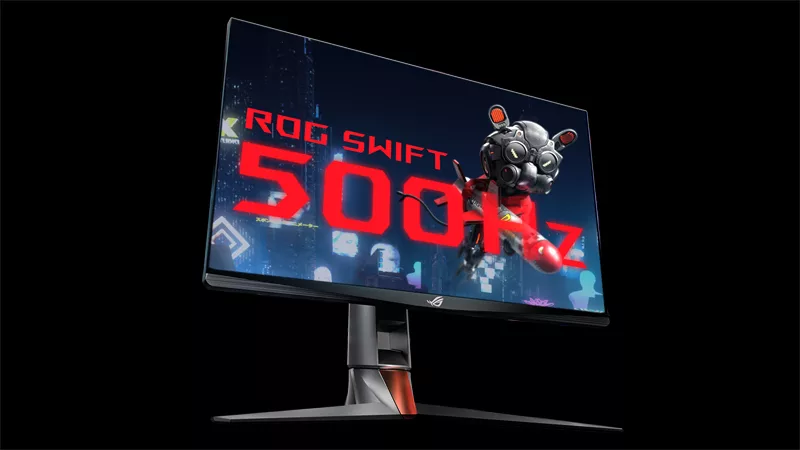Talking product photography and PC modding with Ben Quintanilla, aka ModsbyBenQ
Being PC enthusiasts ourselves, we love to share interesting and unique builds that incorporate our hardware into their designs. Occasionally we’ll partner with a builder for one-off projects, such as the incredible Blanco build by PC modder BenQ. You’ve probably seen his eye-catching designs around the web, and recently I was able to sit down and talk with Ben about his history with product photography and custom PC modding.
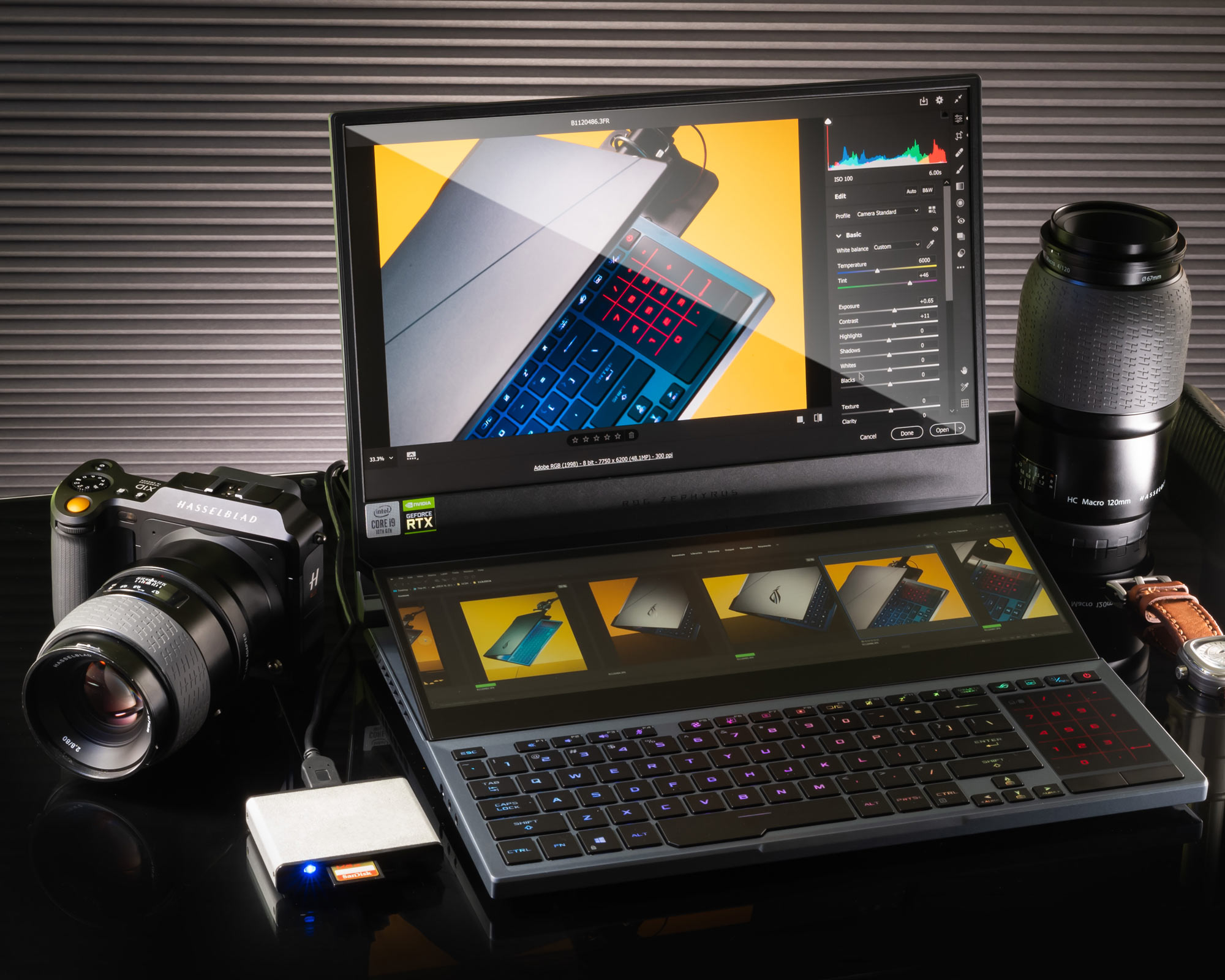
While most people may recognize his custom PC creations, building and modding PCs isn’t his first love. That distinction goes to product photography, a skill that he’s tapped to showcase the beauty of his DIY builds. Read on to learn how Ben Quintanilla combines his passions to carve out his niche in the modding community and find out how he uses the dual screens of our ROG Zephyrus Duo 15 to bridge those worlds.
From photographer to PC modder
Ben first started in commercial photography after spending a lot of time at work color-correcting photos and prepping them for the printing press. He eventually realized that he could address many of the issues he saw while taking the photos rather than fixing them in post. Since then, he’s spent the last 12 years taking commercial photos, especially of products.
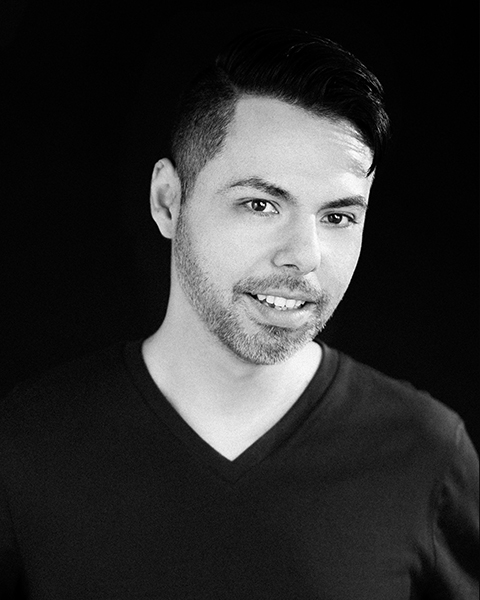 Roughly two years ago, Ben decided that he wanted to return to his alma mater to seek a degree in industrial design, something that has always interested him. When he looked over the course requirements, he found that his current PC wasn’t up to snuff, so he went shopping for a new one. Since he didn’t just want a typical off-the-shelf system, he did some research on custom PC builders and decided that he could do just as good a job himself for considerably less than others were asking.
Roughly two years ago, Ben decided that he wanted to return to his alma mater to seek a degree in industrial design, something that has always interested him. When he looked over the course requirements, he found that his current PC wasn’t up to snuff, so he went shopping for a new one. Since he didn’t just want a typical off-the-shelf system, he did some research on custom PC builders and decided that he could do just as good a job himself for considerably less than others were asking.
Eventually, Ben went on to order all of the parts he needed and assembled his first custom modded machine. Being the photographer he is, he captured some images of his creation to share with the modding community, who quickly let him know how much his work stood out. After listening to the feedback from his peers in the community, Ben decided to start an Instagram account to showcase his modding work.
Once he established his account, companies started approaching Ben about collaborating on new custom PC builds. Each time a company reached out, he would ask what they needed from him once the build was completed. Every company had the same single requirement: high-quality images of the finished system. This cemented the idea that he was onto something unique by blending his new passion for modding with his existing talents in product photography.
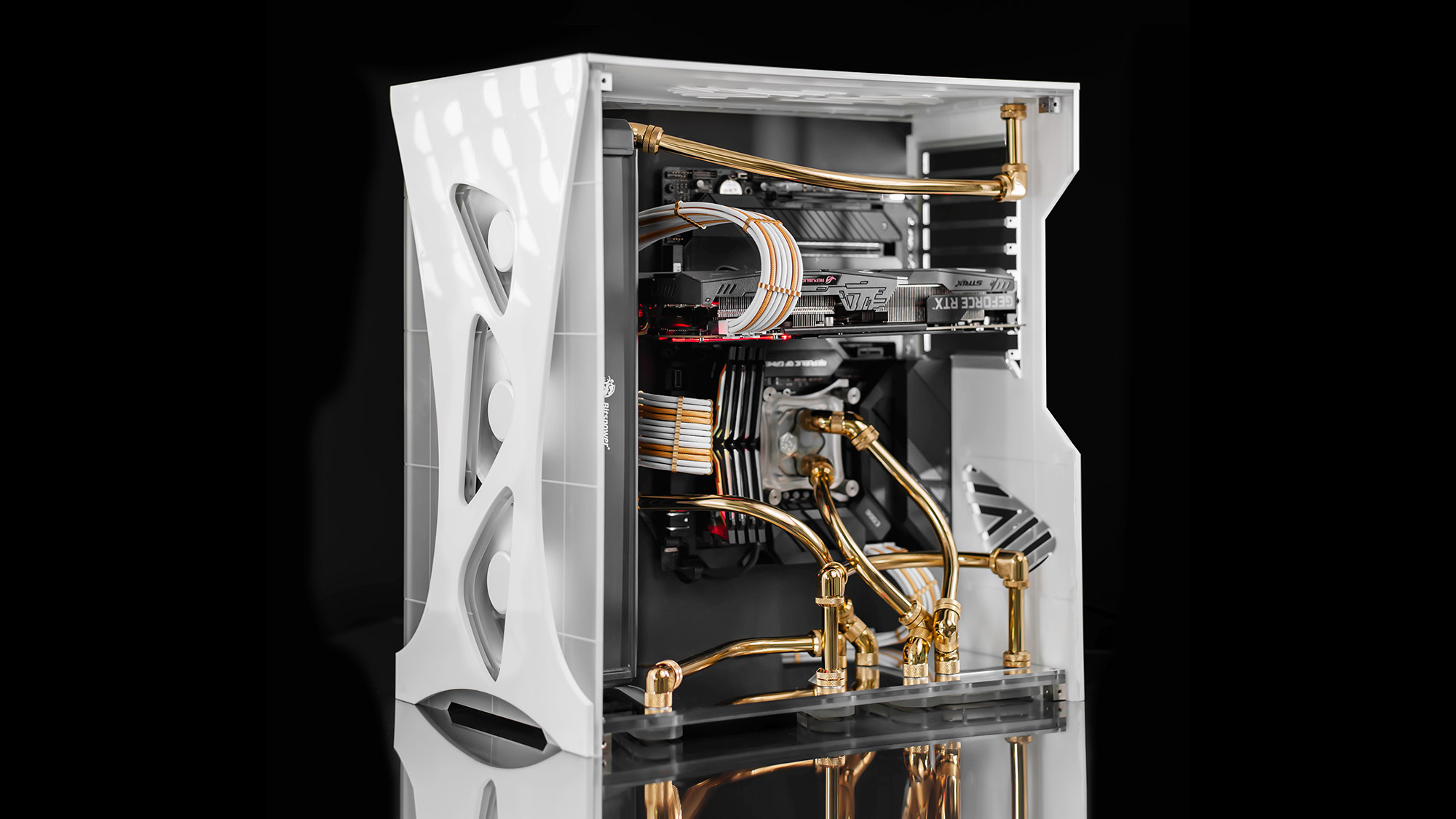 BenQ's Blanco Build
BenQ's Blanco Build
Since most of his public work depicts the machines he’s modded, he’s best known for that part of his process. But the photography is just as important to him, if not more so. Ben describes his work as “not just me modding a PC. It’s also me providing a photography service that’s high quality and professional that not a lot of people are doing.”
Using the ROG Zephyrus Duo 15 in the studio and on the road
Whether he’s on the road doing commercial shoots, or at home photographing his latest custom creation, Ben uses the ROG Zephyrus Duo 15 to enhance his work. You might assume that a laptop would only be useful during the post-processing phase of photography, but don’t tell that to Ben. Beyond the impressive specs that make it a powerhouse for portable photo processing, the expansive secondary display that we call the ROG ScreenPad Plus unlocks further potential during every single shot he takes.
Rather than leaning on the small integrated screen of his camera, or carrying around a dedicated portable display, Ben tethers his Hasselblad medium format camera to the Zephyrus Duo 15. Using Hasselblad’s Phocus software, he can see exactly what the camera is going to capture on the primary display. The 15.6” 4K display is factory calibrated for accuracy across 100% of the Adobe RGB space, so whether he’s setting up the shot or editing it in post, he doesn’t have to worry about color consistency.
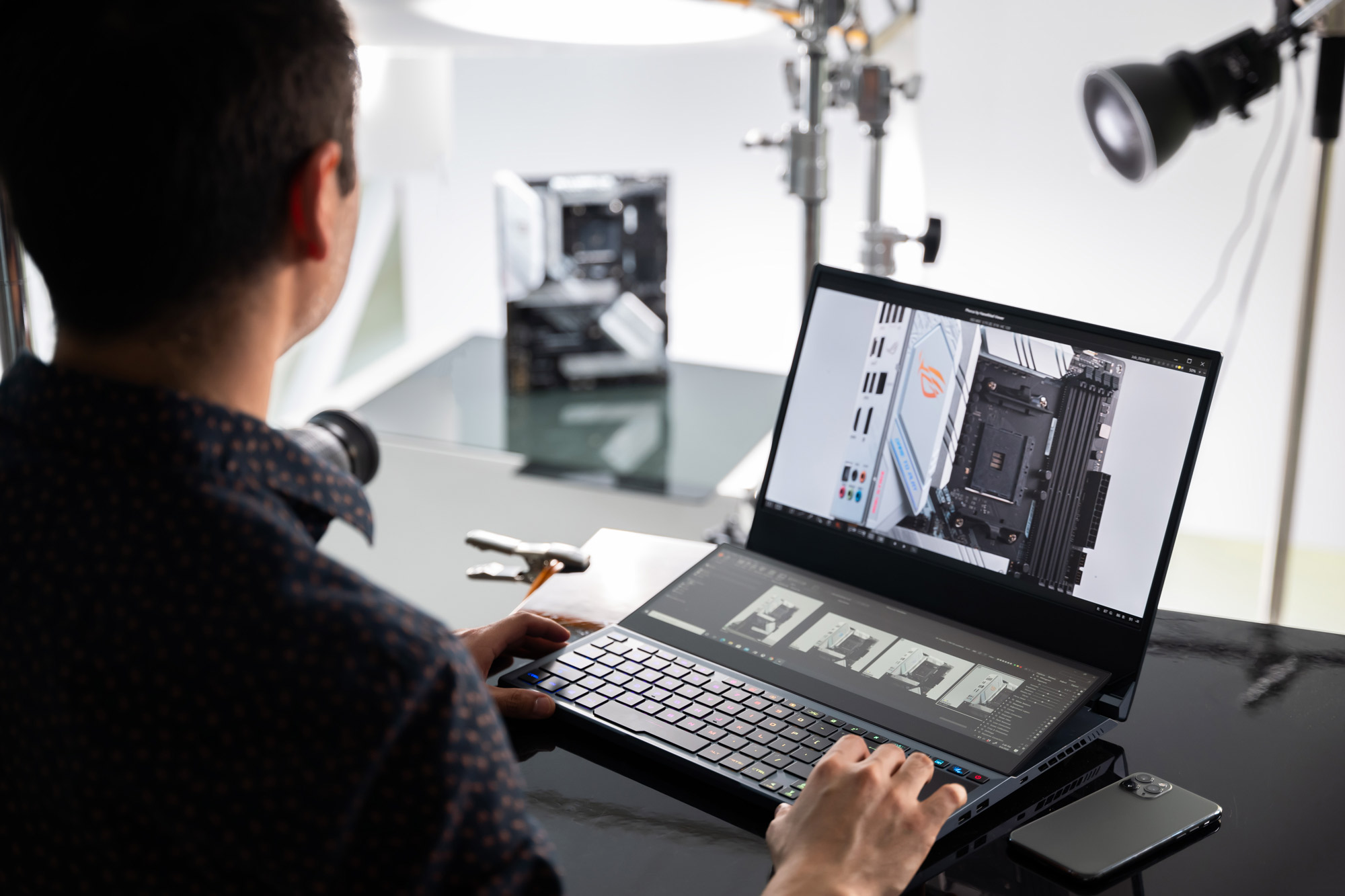
The Phocus software has a filmstrip that shows all of your previous shots. Normally this would take up a large chunk of space on a single screen, but the ROG ScreenPad Plus on the Zephyrus Duo 15 is the perfect place to anchor the filmstrip. And since it’s a touchscreen, Ben uses it to quickly go back through other shots and select them when he wants to make modifications across several photos at once. “It’s perfect for a studio environment. It allows you to set all of your windows where you need them to be,” says Ben.
When I asked him how the Zephyrus Duo 15 fits into his on-site shoots for corporate clients, Ben told me that “it saves me time, and from carrying so much stuff around.” But the Zephyrus Duo 15 doesn’t just benefit Ben’s work - his clients love it too. “When I go to a shoot, the art director is there, or the stylist is there, and they want to see the shots that I’m taking. Normally I’d take another monitor or an iPad with me, but since this is a dual display, I can just take this one laptop.”
On product photography with BenQ
Product photography might sound as simple as setting an object on a nice background and taking a few snaps. However, anyone who’s ever tried their hand at professional-looking product photos knows that there’s much more to the process. And like other forms of photography, it’s very much an art.
When I asked Ben what product photography means to him, he replied that “my job is to take something and make people go ‘I want that.’ So I ask myself how I can photograph this thing so that it looks like an art piece.” And just like every other artist, Ben has his own particular style that sets his work apart from others’. Namely, he aims to take photos of objects that are so crisp and clean that they appear to be computer-generated images rather than photographs. In fact, when writing about his Blanco build last year, I had to ask if some of the shots were renderings.
Since Ben is a master of this specific style, I asked if he could share some of the gear he uses for his shoots, as well as some tips on achieving that signature 3D-rendered look. He was more than happy to share, saying, “We all learn from each other. A lot of the guys helped me out with modding, and learning how to use software like Fusion 360, so it goes both ways. I want to give back and inspire others with what I do.”
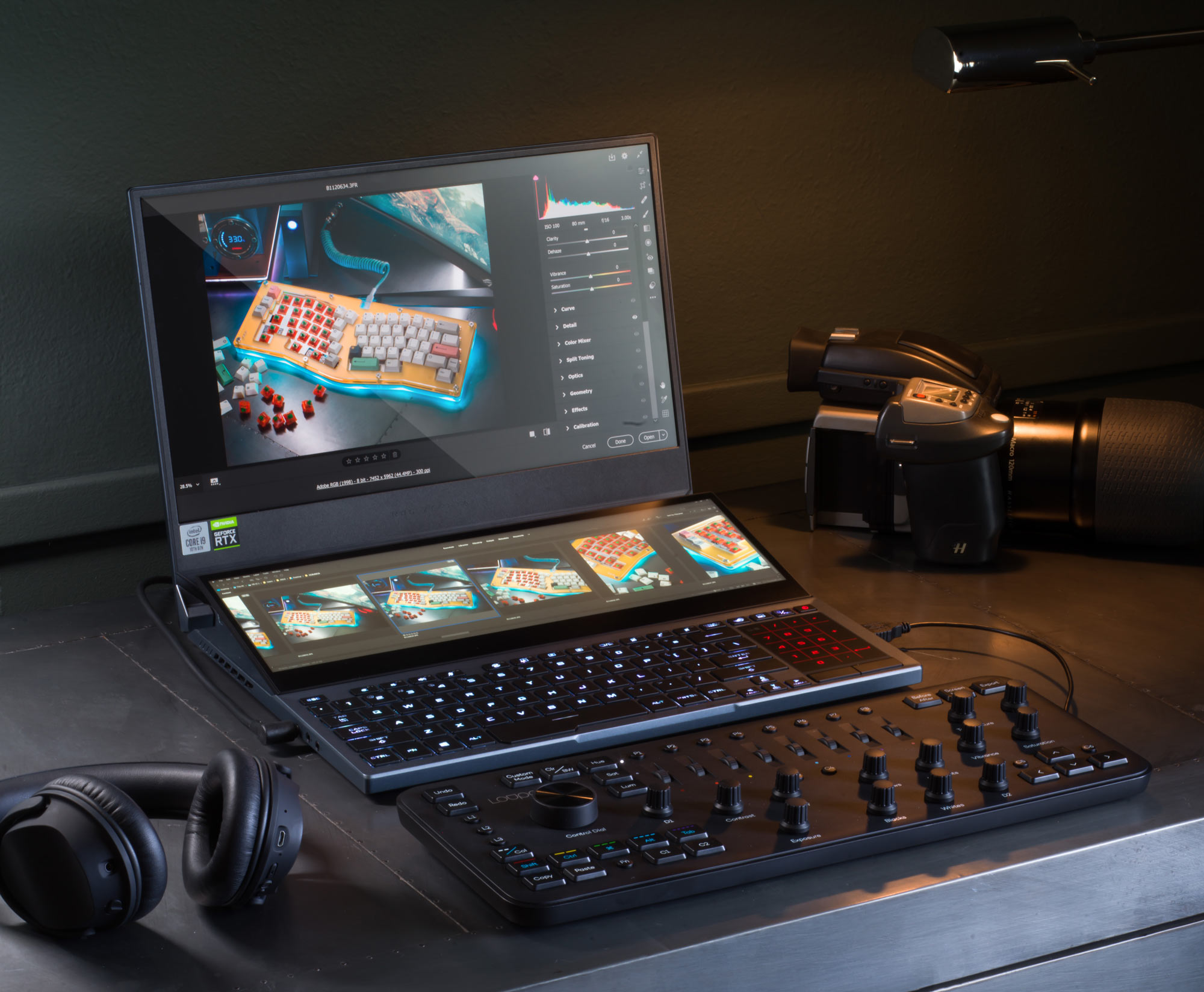
We started with the core components of photography, the camera body, and the lenses he uses for product shots. Like a true seasoned pro, he quickly reminded our readers that “a lot of it is not necessarily the camera you use, but how you light the product” before continuing.
The main body that he uses is a Hasselblad XD-1 medium-format body. He explained that a medium-format camera captures so much more detail than a traditional full-frame model, saying, “you have a lot more freedom to mess with the files when you go into post.” Most of his shots are taken with a 120mm macro lens, which works out to be the equivalent of an 85mm lens on a full-frame body. “This thing is like a one-to-one macro, so I can get pretty close to anything without worrying about focus.”
After establishing the in-hand hardware he uses, I decided to pick Ben’s brain about a subject that he’s passionate about: lighting. He responded at length, stating, “my job is to produce something that looks like a 3D rendering, that’s what they expect. And a lot of that has to do with how light reflects off the material. Even when I do portraits, I don’t use the same softbox that I do when I’m shooting products.” He went further, explaining “what I strive for is the way light reflects off the material on a computer, I try to convey that in a photograph.”
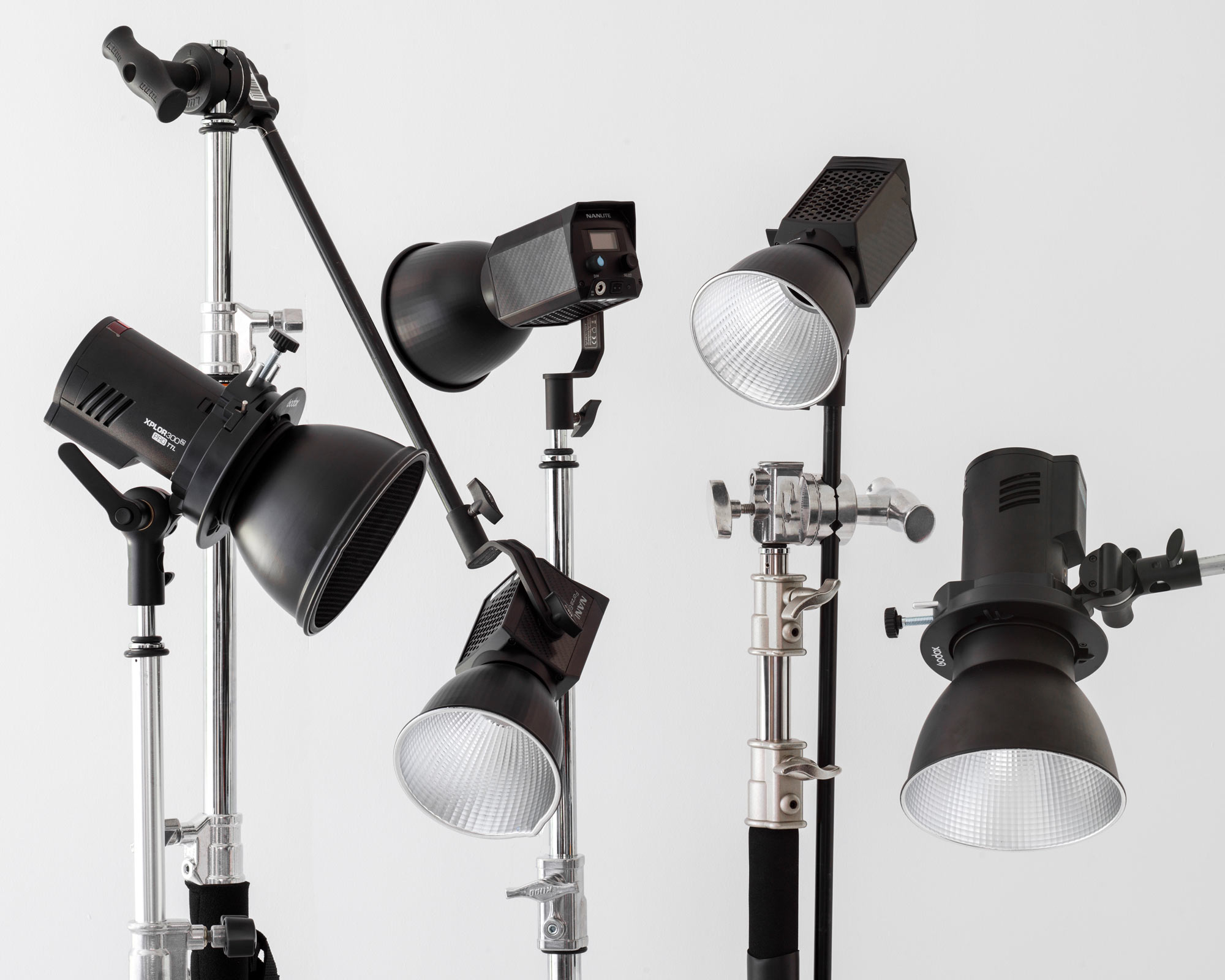
Ben forgoes the traditional softbox in favor of using diffuse paper over his lights to achieve that signature rendered look. The material creates a fine gradient that is a key component in producing a photograph that looks like it was rendered on a PC. For the final piece of the lighting puzzle, Ben places a grid between the lights and diffuse paper. By directing the light at a specific angle across the grid and through the paper, it gently fades across the product, creating that perfect gradient found in nearly all of Ben’s work.
Many of his builds feature RGB LEDs, which can be notoriously tricky to capture. Since he was happy to share lighting advice, he had a quick tip for our readers that want to capture their Aura Sync RGB devices in all their glory.
"What people don't realize is that they can drag the shutter so it can pick up all of the ambient light from the RGB. So when I'm shooting something with RGB, I set my strobe so it fires briefly to light the whole scene, and then my shutter drags so that it picks up the RGB. " Ben also mentioned another way to capture RGB, though it's clearly not his preferred method. "You can do it the long way, where you take multiple shots. You do one shot with your flash and all the RGB turned off. Then you take another shot that just exposes the RGB, and blend the two together in Photoshop."
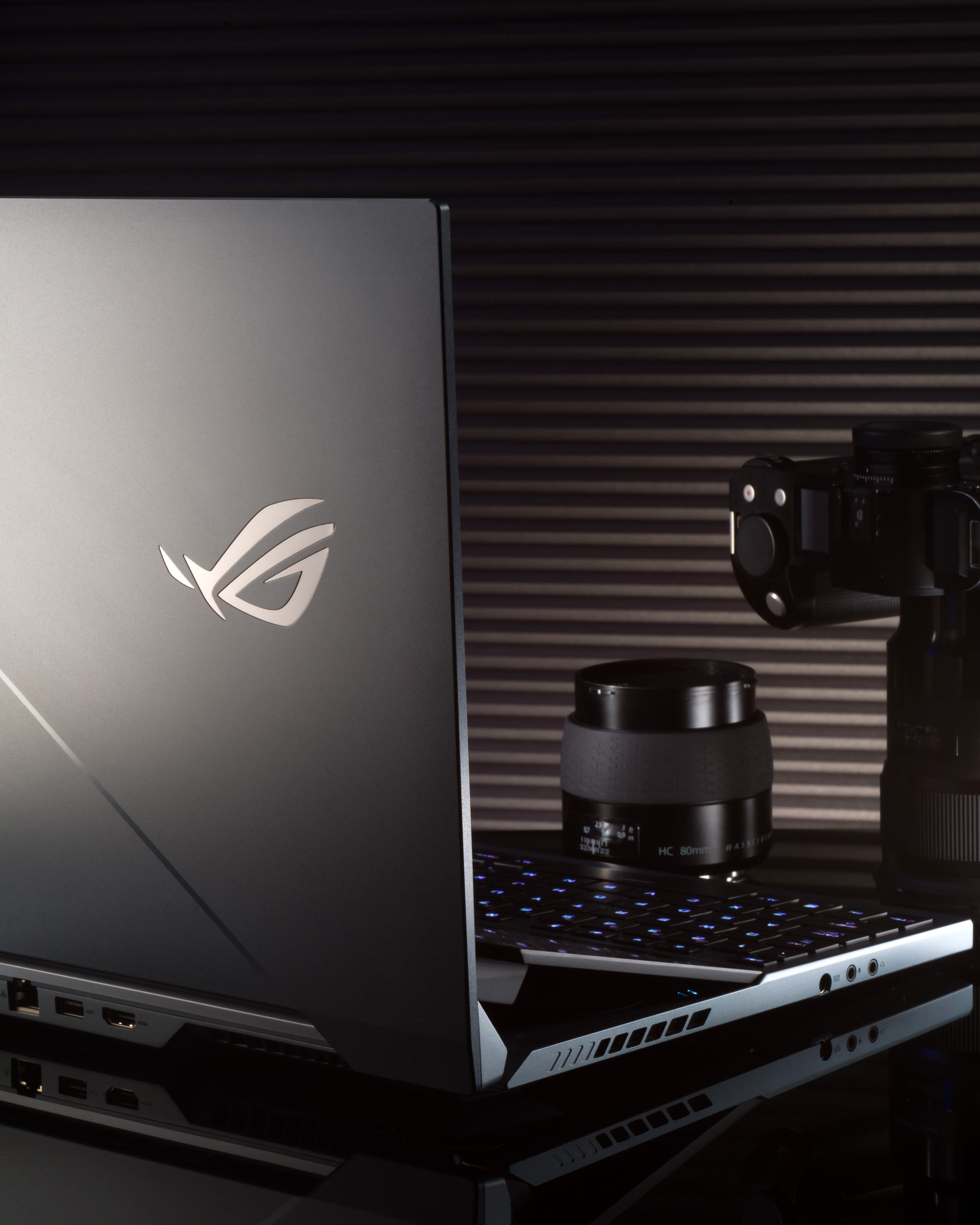
On to the next build
BenQ is an accomplished creator with a passion for product photography that’s intersected with a newfound talent for PC modding. He may be best known for his modding work, but he wanted me to remind everyone to “get to know who you follow—sometimes they’re more than just what you see.” Everyone has a variety of talents, even if they're not immediately obvious at first glance.
The ROG Zephyrus Duo 15 powers each step of Ben’s product photography journey, whether he’s using it in the studio to tether his favorite Hasselblad camera, or editing photos and videos on the road. The factory-calibrated, Pantone Validated main display allows him to shoot and edit without worrying about color accuracy. At the same time, the secondary ScreenPad Plus gives him the freedom to arrange all of his tools where he needs them without needing to carry around a second monitor.
If you want to follow Ben’s photography and modding work, be sure to head over to his Instagram page and check out his previous builds.
